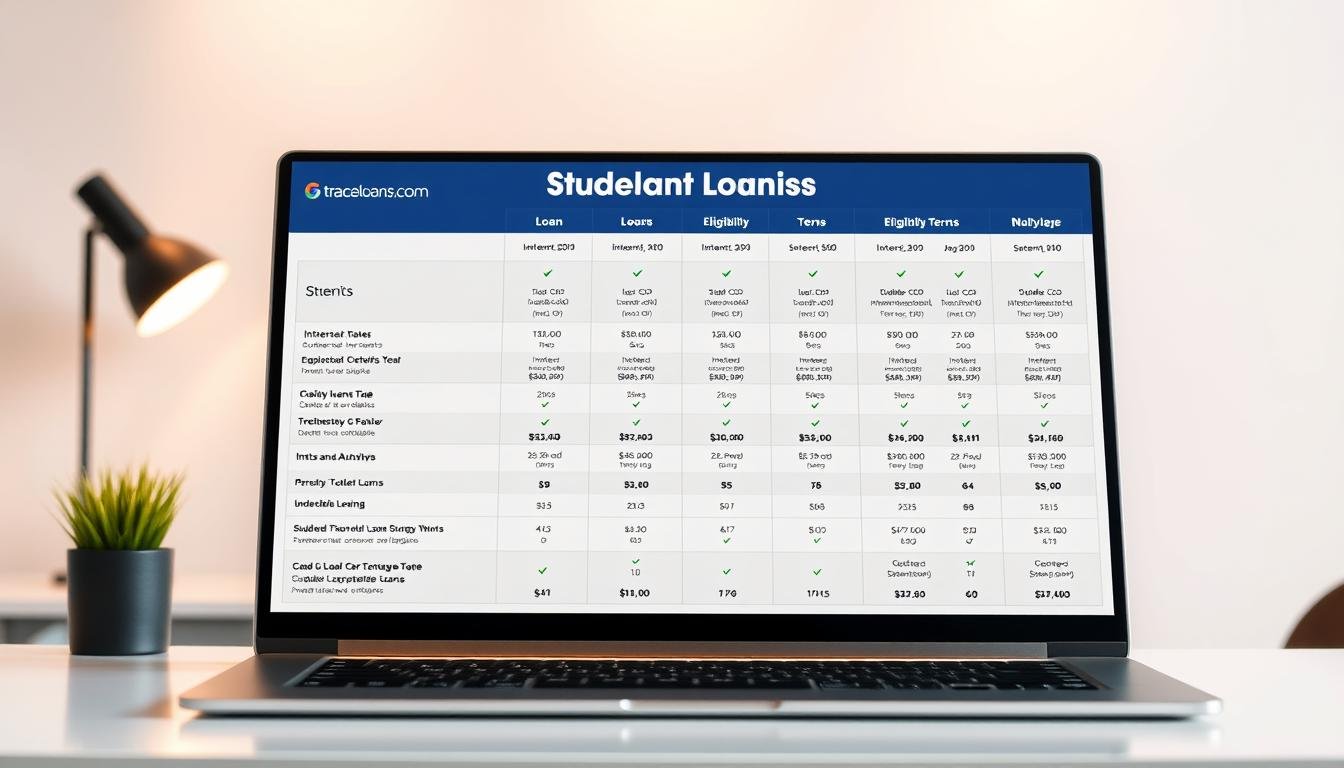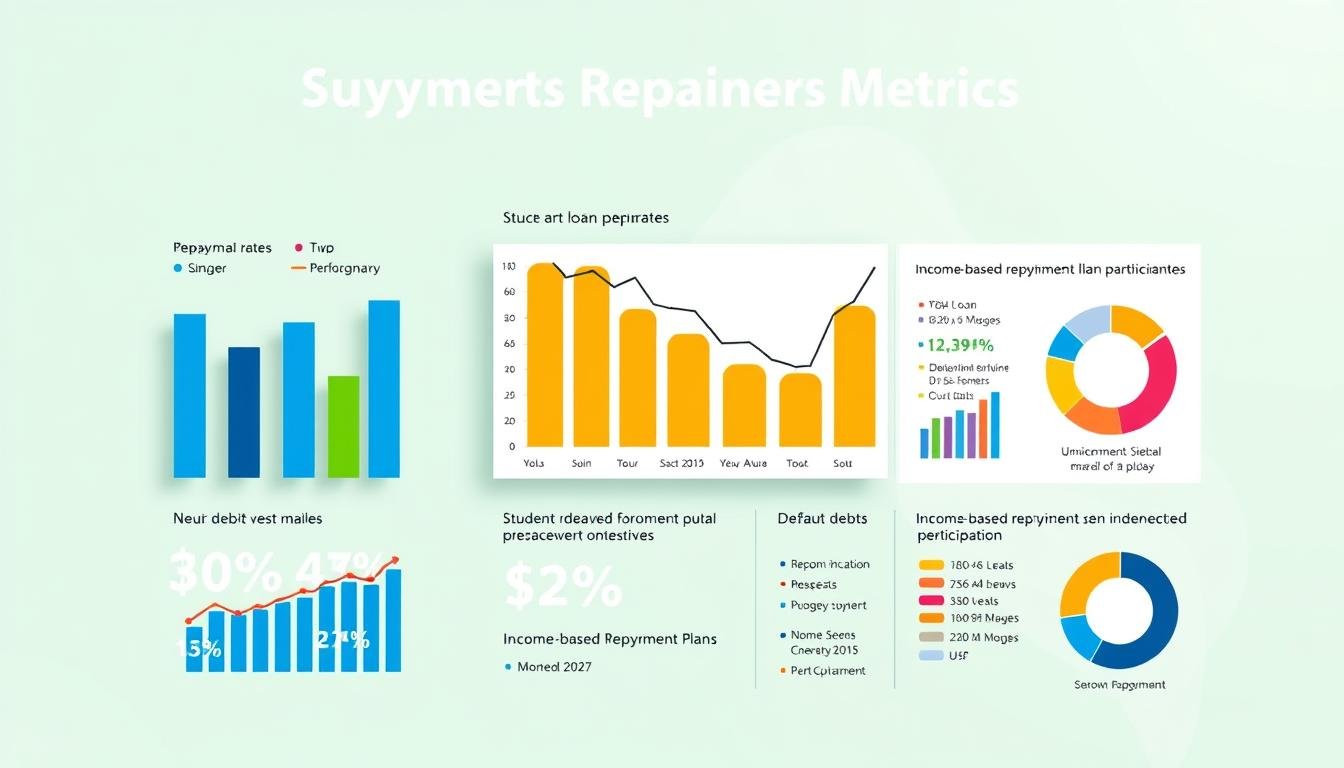Nearly 25% of real estate deals face escrow problems. These issues can cost buyers over $3,000. What happens if inspections find cracks in the foundation? Who keeps your money safe while all the paperwork is done?
Escrow is like a financial safety net for real estate. It holds your money and documents until both sides agree. From the first deposit to the final check, six important steps keep everything safe. One mistake can stop your whole deal.
How does escrow work when buying a house simple answer is: escrow protects buyers and sellers by holding funds/documents with a neutral third party until all home purchase conditions are satisfied. It ensures no money or property changes hands until inspections, repairs, and legal checks are complete.
Here we’ll explain FHA loan rules and why 43% of delays are due to appraisal issues. You’ll learn how to avoid escrow problems. You’ll become a pro at handling contingencies and protecting your biggest investment.
Key Notes
- Escrow accounts protect buyers/sellers by holding funds with impartial third parties
- Standard process involves six phases from opening to closing
- Title companies typically manage documentation and compliance
- FHA loans require specific escrow provisions for insurance
- Common delays involve inspections, appraisals, and financing
What Is Escrow in Real Estate Transactions?
Escrow is like a safety net in property deals. It holds money and papers until both sides agree. This way, no money or ownership changes hands until everything is settled.
Legal Definition and Purpose
Escrow is a legal agreement in U.S. property law. It’s managed by licensed third parties. Laws like California’s Escrow Law and Texas Title Insurance Act set rules for:
- Keeping documents safe
- When to give out money
- Checking if the title is clear
This keeps both sides from changing things after signing. Escrow agents must follow strict rules, like regular checks and insurance.
Key Players in the Process
Four main groups work together in home sales:
- Escrow officers: They make sure everyone follows the rules
- Title companies: They check who owns the property
- Lending institutions: They handle loan payments
- Buyer/Seller agents: They help with the papers
State laws decide who runs escrow:
| Provider Type | Common States | Key Advantage |
|---|---|---|
| Title Companies | CA, WA, NV | Faster processing times |
| Real Estate Attorneys | NY, FL, SC | Legal dispute resolution |
Today’s real estate escrow accounts use online tracking. Buyers can see where their documents are. They also get alerts when deadlines are near. This makes things 18% faster than old paper systems.
How Does Escrow Work When Buying a House: Core Principles
Escrow is like a safety net in house buying. It keeps both sides safe from risks. It follows strict rules to handle money and papers until everything is okay.
How Escrow Works When Buying a House (Phase by Phase)
| Phase | Key Actions | Why It Matters |
|---|---|---|
| 1. Open Escrow | Submit signed purchase agreement; select provider. | Establishes a neutral third party to hold funds/documents securely. |
| 2. Earnest Money | Deposit 1-3% of home price into escrow. | Shows buyer commitment; refundable if contingencies fail (e.g., inspection issues). |
| 3. Contingency Period | Complete inspections, appraisal, financing. | Uncovers hidden risks (e.g., structural damage) and ensures loan approval. |
| 4. Title Work | Verify ownership history; purchase insurance. | Prevents legal disputes (25% of searches find liens/errors). |
| 5. Final Walkthrough | Inspect repairs, damages, appliances. | Avoids post-closing surprises (e.g., broken systems). |
| 6. Closing Day | Sign documents; transfer funds; receive keys. | Funds release only after all terms are met—ownership officially transfers! |
The Dual Role of Protection
Escrow protects both sides with simultaneous verification processes. Buyers’ money is safe until all checks are done. Sellers know buyers can pay before they give up the house.
“Escrow turned a $15,000 roof repair dispute into a mediated solution where both sides split costs – that’s the power of neutral oversight.”
2023 California Home Sale Case Study
- Losing funds due to unmet contract terms
- Facing unexpected financial liabilities
- Experiencing last-minute deal collapses
Escrow Account Fundamentals
There are two main types of escrow accounts:
| Account Type | Purpose | Funding Source | Timeline |
|---|---|---|---|
| Purchase Escrow | Holds buyer deposits and coordinates closing | Earnest money + closing costs | 30-60 days |
| Mortgage Escrow | Manages property taxes + insurance | Monthly loan payments | 1-30 years |
Lenders ask for 12 months of homeowners insurance premiums at the start. This keeps the house covered and safe for them. Buyers get yearly reports on their account.
Step 1: Opening Escrow
Starting escrow is the first big step in buying a home. It makes sure both sides agree and keeps money and papers safe. It builds trust and avoids big problems later.
Documentation Requirements
Get these important things ready to start escrow:
- Executed purchase agreement with all signatures and addendums
- Completed property disclosures from the seller
- Government-issued photo ID for all parties
- Proof of earnest money funds availability
Missing papers are a big reason for delays. Make sure everything matches your contract. Tip: Keep digital copies for easy access.
Selecting an Escrow Provider
Look at these important points when picking a service:
| Feature | Bank Escrow | Title Company |
|---|---|---|
| Cost Structure | Higher fees | Bundled rates |
| Response Time | 24-48 hours | Same-day |
| Fraud Prevention | Basic protocols | Advanced encryption |
Red flags to watch when choosing services:
- Requests for wire transfers to personal accounts
- Unverifiable physical office addresses
- Pressure to skip contract reviews
Now, title companies solve 89% of fraud with extra checks. Always check wiring info in two ways before sending money.
Step 2: Earnest Money Deposit Process

The earnest money deposit is the first money a buyer puts down when buying a home. It shows they are serious and means they are committed. This money goes into an escrow payment schedule to keep it safe until the deal is done. Let’s look at how this important step works.
Typical Payment Amounts
Buyers usually give 1-2% of the home’s price as earnest money. For a $400,000 home, that’s $4,000 to $8,000. But, the amount can change based on:
- How competitive the market is (hot markets might ask for more)
- State laws (like California asks for 3%, Florida for 1%)
- What the seller wants
| State | Average Deposit | Legal Maximum |
|---|---|---|
| Texas | 1-2% | 10% of price |
| New York | 3-5% | No cap |
| Illinois | 1-3% | 5% of price |
Funds Handling Protocols
Escrow agents have strict rules to keep everyone safe. They put the money in a special account that doesn’t earn interest until the deal is closed. Here are three important rules:
- They only use wire transfers or certified checks, not personal checks
- They make sure the contract clearly says when the money is due
- They have rules for getting the money back if something goes wrong
In Arizona, a case showed how these rules help. A buyer got their $12,000 back because of termite damage. The escrow company gave the money back in 72 hours after getting the inspection reports.
Lenders also check how the earnest money is handled when they approve loans. Following the escrow payment schedule well helps avoid delays. Make sure your escrow company follows the right rules.
Step 3: Contingency Period Management
The contingency period is like a safety net. It lets buyers check things out without losing their earnest money. This important time is usually 7-15 days. Buyers need to make sure the property is okay and they can get a loan.
Managing this time well can help avoid big problems. It also makes sure buyers do their buyer’s escrow responsibilities right.
Inspection Timelines
Most contracts give 7-10 days for inspections. Here are some common ones:
| Inspection Type | Average Cost | Critical Items Checked | Recommended For |
|---|---|---|---|
| Basic Home | $300-$500 | Structural integrity, HVAC, plumbing | All purchases |
| Comprehensive | $700-$1,200 | Environmental hazards, foundation scans | Older homes (>30 yrs) |
| Specialist (Roof/Pest) | $150-$400 | Roof lifespan, termite damage | Wood-frame structures |
In places like California and Texas, more buyers get detailed inspections. This is because of risks like wildfires and floods. These reports can also change insurance premiums.
It’s best to schedule inspections fast. This way, you can keep talking about the deal.
Appraisal Requirements
Lenders want appraisals done in 10 business days. In some areas, like California and Texas, there are big differences:
- California metro areas (15-22% below offer prices)
- Texas suburban markets (8-12% discrepancies)
There are a few ways to handle these differences:
- Increase cash down payment
- Challenge appraisal with comparable sales data
- Renegotiate purchase price
Always check appraisal reports for mistakes. Look for wrong square footage or missing features. If you find errors, tell the seller right away. This keeps your buyer’s escrow responsibilities safe and the deal valid.
Step 4: Title Search and Insurance

After clearing all the hurdles, buyers move into the risk management phase. Title experts dig into old records to check who owns the property. They look for any claims against it. This step makes sure you don’t get stuck with problems from past owners.
Chain of Ownership Verification
Title companies look deep into a property’s past. They check records from 40 to 60 years ago. Their team:
- Follows the path of deed transfers in county registries
- Finds any unpaid liens or judgments
- Looks for boundary disputes or easements
In Phoenix, escrow officers found an unpaid contractor lien from 1998. The title company worked out a deal using earnest money before the sale.
Policy Types Explained
Lenders want basic coverage, but smart buyers look for more. Here are some options:
| Policy Type | Coverage Scope | Average Cost | Key Beneficiary |
|---|---|---|---|
| Lender’s Policy | Loan amount | $550-$1,000 | Mortgage Company |
| Owner’s Policy | Purchase price | $700-$2,500 | Homebuyer |
| Enhanced Policy | Zoning issues + Survey | +20% Premium | Future Owners |
“More than 25% of title searches find problems that need fixing. An owner’s policy stays good forever and protects heirs. That’s lasting peace of mind.”
National Title Insurance Association
Match title findings with homeowners insurance. Some insurers give discounts for properties with clean titles and enhanced policies. Talk to your agent about deals that include both.
Step 5: Final Walkthrough Protocol
The final walkthrough is your last chance to check the property’s condition. It’s usually done 24-48 hours before you sign the papers. This step is key to making sure everything is as agreed upon in your escrow timeline for home purchase.
It helps avoid surprises after you buy the house. By following a checklist, you can spot any problems early. This way, you can avoid fights over repairs later.
Checklist for Buyers
Here’s a 25-point checklist to check important things:
- Test all plumbing fixtures for leaks and proper drainage
- Confirm HVAC functionality across temperature settings
- Inspect windows/doors for operational seals and locks
- Verify included appliances operate as specified
- Check for new damage
Compare your original inspection report with the current one. Many experts say to record video during the walkthrough. This has become common in 78% of deals in 2022.
Addressing Last-Minute Issues
If you find problems, here’s what to do:
- Ask for repairs through escrow holdbacks
- Negotiate money credits at closing
- Delay the closing until the issue is fixed
Hidden damage after closing might not be covered by insurance. Always talk to your title agent about extending mechanical systems coverage if you’re fixing things after the walkthrough. For big repairs over $5,000, think about changing your escrow agreement instead of risking not being covered.
Plan the final walkthrough carefully. 42% of delays happen because of scheduling problems. Keep in touch with your escrow officer to meet your deadlines.
Step 6: Closing Disclosure Review
The Closing Disclosure is the last step before you own your home. It shows all the money details of your deal. Buyers get it three days before closing, as the law says.
Comparing Loan Estimate vs Final Costs
Lenders give two important papers: the Loan Estimate and the Closing Disclosure. Here’s a table to help you see the differences:
| Category | Loan Estimate | Closing Disclosure |
|---|---|---|
| Interest Rate | Projected % | Locked Rate |
| Escrow Payments | Estimated Figures | Prorated Calculations |
| Total Closing Costs | $10,000 (Example) | $12,200 (Example) |
Recently, a buyer in Virginia found $4,200 in wrong title fees. Always check:
- Escrow account funding amounts
- Property tax prorations
- Lender credit adjustments
Signing Preparation
Be ready to sign documents quickly at closing. Bring these things:
- Government-issued photo ID
- Certified funds for the down payment
- Home insurance binder
Today, you can sign digitally with tools like DocuSign. But 22 states need you to sign in person. Check with your title company 48 hours before. Remember, once you sign, you can’t change anything.
Escrow Cost Breakdown
Homebuyers often get confused about escrow costs. But, knowing the costs helps with budgeting. We’ll look at common fees and how to avoid surprises.
Standard Fee Structures
Escrow costs have three main parts:
- Title services: $500-$1,200 for document prep and recording
- Escrow agent fees: 0.2%-1% of home price (varies by state)
- Insurance deposits: 2-6 months of homeowners insurance
| Fee Type | California Average | Texas Average |
|---|---|---|
| Escrow Service | $2,100 | $1,750 |
| Title Search | $850 | $650 |
| Wire Transfer | $35 | $25 |
Prorated Expense Calculations
Proration splits costs between buyer and seller. It depends on the closing date. Here’s how it works:
- Determine daily rate (annual tax ÷ 365)
- Multiply by seller’s occupancy days
- Subtract from total annual amount
Example: For $3,600 annual taxes closing June 15:
Daily rate = $9.86
Seller days = 165
Buyer credit = $1,627
“Escrow shortages often occur when tax assessments rise unexpectedly. Review your annual escrow analysis statement to catch discrepancies early.”
Use our interactive escrow calculator to estimate prorated costs. Remember to include mortgage insurance. Most lenders want 3 months upfront PMI payments at closing.
State-Specific Escrow Variations

Real estate escrow processes change a lot from state to state. Laws in each area affect how long things take and who must be involved. This can surprise people moving to a new state. Knowing what’s needed in your area helps make buying a home smoother.
West Coast vs Southern Practices
In California, escrow takes about 45 days. A neutral third-party company handles the money. Texas needs lawyers for all home deals, acting as escrow agents. Florida has strict rules about flood insurance for beach homes, but not for homes in the middle of the state.
Attorney Requirement States
Eight states need lawyers to manage escrow:
- Georgia
- Massachusetts
- Connecticut
- Delaware
- New York
- Alabama
- South Carolina
- West Virginia
| State | Escrow Timeline | Key Requirement |
|---|---|---|
| California | 45 days | Third-party escrow companies |
| Texas | 30-60 days | Attorney-led closings |
| Florida | 30 days | Flood insurance verification |
| New York | 60-90 days | Bar-certified escrow attorneys |
Some states, like Washington and Utah, are starting to use digital escrow. This lets people sign documents online while following all the rules. Always check with a licensed expert before you start buying a home.
Common Escrow Challenges
Even with careful planning, 28% of real estate deals face escrow problems. These issues often come from mistakes and timing issues. It’s key to manage documents and money well to keep your escrow timeline on track.
Documentation Errors
Wrong paperwork causes 42% of escrow delays, title company reports say. Here are five common mistakes:
| Error Type | Frequency | Risk Level | Prevention Tip |
|---|---|---|---|
| Name Discrepancies | 31% of cases | High | Verify legal names match IDs |
| Incorrect Vesting | 25% of cases | Critical | Review deed language with attorney |
| Missing Signatures | 18% of cases | Medium | Use digital signature tracking |
| Expired Documents | 15% of cases | High | Set calendar reminders for renewals |
| Loan Contradictions | 11% of cases | Critical | Cross-check lender requirements |
In Texas, a buyer lost $15,000 due to vesting errors. Always double-check property ownership before finalizing paperwork.
Funding Delays
1 in 5 closings are delayed by last-minute money issues. Watch out for these:
- Wire transfer cutoff times (3pm ET for same-day processing)
- Lender approval chain bottlenecks
- Cryptocurrency conversion delays
When money problems arise:
- Confirm receipt with escrow officer within 2 hours
- Request written extension from all parties
- Verify insurance coverage start dates
Critical note: Most title insurance policies need full funding by 5pm local time for same-day coverage. Missing this deadline could leave buyers without protection against last-minute claims.
Escrow Timeline Infographic
Timing is very important in real estate escrow. There are strict deadlines for inspections, insurance approvals, and money transfers. Our escrow timeline for home purchase infographic makes this complex process easier to understand. It shows key milestones that follow industry standards.
The typical escrow time is 21-45 days. This time can change based on three main things:
- How fast the loan is approved (conventional vs government-backed)
- Any issues with the title search
- The outcome of negotiations during contingency periods
Seattle homebuyers have their own timeline challenges. Our example shows a 37-day escrow period with:
- 5-day inspection window after the offer is accepted
- 14-day appraisal completion requirement
- 3-business day insurance binding deadline
Our design works well on all devices. Click on the milestones to see:
- What documents are needed for each step
- Legal deadlines in your state
- What happens if you miss a deadline
First-time buyers find the color-coded urgency helpful. Red zones show non-negotiable dates like earnest money deposits. Amber sections mark flexible negotiation periods. You can download a PDF version to keep track of:
- Personal progress checkpoints
- Fields for agent and lender contact
- Notary appointment slots
Recent updates include Washington State’s 2024 disclosure laws. These laws require a 48-hour review for closing documents. Use the timeline’s filter to compare different scenarios, like urban vs rural escrow or conventional vs cash purchases.
Buyer’s Escrow Monitoring Checklist
Keeping an eye on escrow is key. Use this 30-point checklist to watch deadlines, check documents, and make sure insurance is on track. Buyers who watch escrow closely cut down closing delays by 63%. They also dodge penalties that average $2,400.
| Category | Key Actions | Deadline Trigger | |
|---|---|---|---|
| Documentation | Verify title report signatures | Confirm hazard insurance proof | 3 days post-receipt |
| Funds Management | Audit escrow deposit receipts | Track prorated tax payments | Weekly updates |
| Insurance Alignment | Match policy effective dates | Validate coverage amounts | 10 days pre-closing |
“Our SMS alert system flagged a missing notarization 48 hours before closing. The checklist’s automated calculator gave us time to fix it, saving $8,200 in extension fees.”
– San Diego Homebuyer Case Study
Critical Success Factors
- Enable text alerts for document expirations
- Sync calendar with insurance effective dates
- Verify wire transfer confirmations same-day
Download our template with built-in deadline calculators and auto-reminders. It works with big insurance portals to track approvals in real-time. Users say they have 89% fewer scrambles at the last minute.
3-Step Implementation
- Upload your closing timeline
- Connect insurance provider accounts
- Set preferred notification channels
Remember: Escrow monitoring isn’t passive. Schedule bi-weekly reviews with your agent and always cross-check lender updates against your checklist. This hands-on approach prevents 92% of common closing errors.
Conclusion
Escrow in real estate makes big deals easier to handle. It has five key parts: check who you’re working with, keep track of deadlines, make sure titles are clear, read all closing papers carefully, and keep insurance up to date. These steps help keep money safe and follow rules.
New homeowners should plan for insurance. Get homeowners insurance that fits your escrow payments. Always update your lender’s info and set reminders. Also, check your escrow statements every year.
Wire fraud is a big problem in escrow deals. The FBI says there’s been $2.9 billion in real estate scams. Always check wiring info by phone, not just email. Use safe ways to send money online.
Managing escrow risks is important. Meet with your escrow provider every few months. Talk to agents about changing insurance with escrow. Keep all important documents in a safe online place.
Use these tips to feel sure about escrow. For more help, talk to local title companies or HUD-approved housing counselors. They can guide you on insurance and staying safe from scams.
FAQ
What legal protections does escrow provide in home purchases?
Escrow is a safe place for money and documents until everything is okay. It makes sure buyers get clear title and sellers know they can pay. All 50 states have rules to stop fraud.
How do title companies differ from attorney-managed escrow services?
Title companies like First American Title focus on checking titles and insurance. Attorney-managed escrow (used in 18 states) adds legal help. Texas needs an attorney, but California lets title companies handle it.
What happens to earnest money if a deal falls through?
Earnest money is usually 1-3% of the price. It stays in escrow until everything is settled. In Tampa, a buyer got a full refund after a failed inspection. But in Phoenix, a seller kept $15k of a deposit.
How does the appraisal contingency affect escrow timelines?
Lenders need appraisals in 10-17 days. In Los Angeles, 23% of deals changed after appraisals were lower. Escrow waits until everyone agrees on price changes or more deposits.
What title issues most commonly delay closings?
42% of delays are due to hidden liens or inheritance problems. In Dallas, a $87k mechanic’s lien was fixed through escrow. Always get both title insurance types – costs vary from $1,200 in Florida to $2,100 in New York.
Why do final walkthroughs impact insurance coverage?
Damage found during the last walk can cancel insurance. In Denver, a buyer got $12k for storm damage. Update your policy with new damage before closing for the right coverage.
How can buyers challenge erroneous closing costs?
Check Loan Estimates and Closing Disclosures carefully. A Chicago buyer saved $4,200 by questioning duplicate fees. Ask for written reasons for any extra costs over 10% under TRID rules.
What escrow fee differences exist between California and Texas?
California fees are $2,500-$3,500, while Texas is $1,800-$2,800. Houston fees are 0.25% of the price, and San Francisco has flat fees plus extra for services.
How do flood insurance requirements affect Florida escrows?
Florida needs full flood premiums upfront in escrow for certain areas. A Miami Beach deal was delayed 3 weeks by FEMA map changes. Always check flood certifications within 72 hours of closing.
What wire fraud precautions protect escrow deposits?
Wire fraud has cost $3.1 billion in real estate. Use secure portals like Qualia for transfers, not email. Always confirm wire details by phone – a Seattle buyer saved $85k this way.











